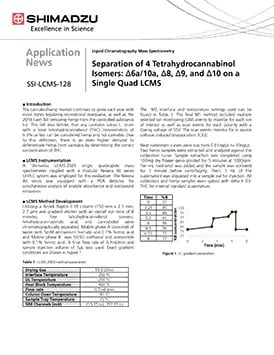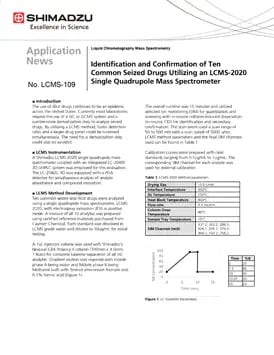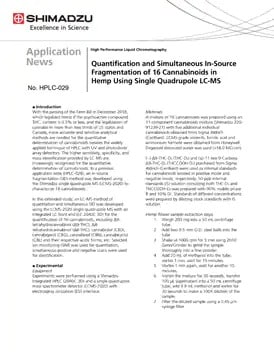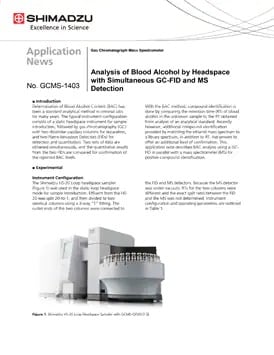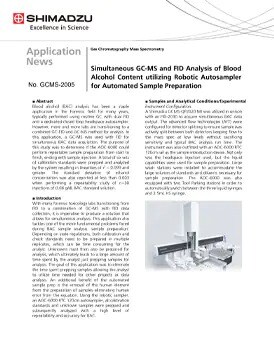Return to Forensic Resource Library
Forensic Applications
Featured Applications
Separation of 4 Tetrahydrocannabinol Isomers: Δ6a/10a, Δ8, Δ9, and Δ10 on a Single Quad LCMS
The cannabis/hemp market continues to grow each year with more states legalizing recreational marijuana, as well as the 2018 Farm Bill removing hemp from the controlled substance list. This bill also defines that any cannabis sativa L. strain with a total tetrahydrocannabinol (THC) concentration of 0.3% or less can be considered hemp and not cannabis. Due to this definition, there is an even higher demand to differentiate hemp from cannabis by determining the correct concentration of THC.
Identification and Confirmation of Ten Common Seized Drugs Utilizing an LCMS-2020 Single Quadrupole Mass Spectrometer
The use of illicit drugs continues to be an epidemic across the United States. Currently most laboratories require the use of a GC or GCMS system and a cumbersome derivatization step to analyze seized drugs. By utilizing a LCMS method, faster detection rates and a larger drug panel could be screened simultaneously. The need for a derivatization step could also be avoided.
Quantification and Simultaneous In-Source Fragmentation of 16 Cannabinoids in Hemp Using Single Quadrupole LC-MS
In this extended study, an LC-MS method of quantitation and simultaneous SID was developed using the LCMS-2020 single quadrupole MS with an integrated LC front end (LC 2040C 3D) for the quantification of 16 cannabinoids, including Δ9-tetrahydrocannabinol (Δ9-THC), Δ8-tetrahydrocannabinol (Δ8-THC), cannabidiol (CBD), cannabigerol (CBG), cannabinol (CBN), cannabicyclol (CBL) and their respective acidic forms, etc. Selected ion monitoring (SIM) was used for quantitation, simultaneous positive and negative scans were used for identification.
Analysis of Blood Alcohol by Headspace with Simultaneous GC-FID and MS Detection
Determination of Blood Alcohol Content (BAC) has been a standard analytical method in criminal labs for many years. The typical instrument configuration consists of a static headspace instrument for sample introduction, followed by gas chromatography (GC) with two dissimilar capillary columns for separation, and two Flame Ionization Detectors (FIDs) for detection and quantitation. Two sets of data are obtained simultaneously, and the quantitative results from the two FIDs are compared for confirmation of the reported BAC levels.
Simultaneous GC-MS and FID Analysis of Blood Alcohol Content utilizing Robotic Autosampler for Automated Sample Preparation
Blood alcohol (ethanol) analysis (BAC) is routinely performed in forensic laboratories for driver impairment and other casework. This analysis is typically done by gas chromatography with headspace sample (HS-GC) introduction. Historically the GC parameters for this application utilize constant high pressure (approximately 200 kPa) and a temperature of 50°C. In combination, these parameters have caused distortion in the chromatography for analysis with a dual column system and single injection. Using the Shimadzu GC-2010 Plus or Nexis GC-2030 with HS-20 loop headspace sampler, column splitting, and dual flame ionization detectors (FID), several parameters were tested for system and method optimization to meet the needs of this analysis.



